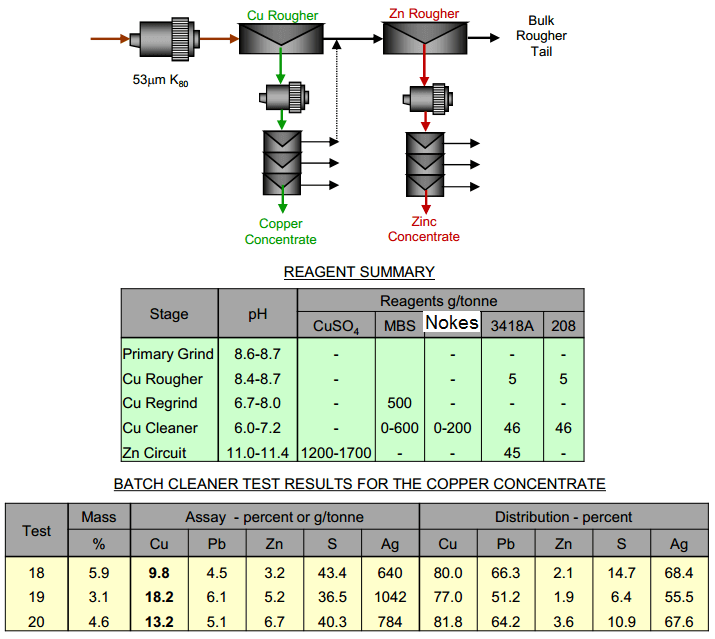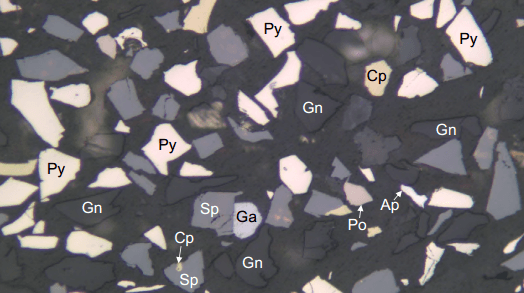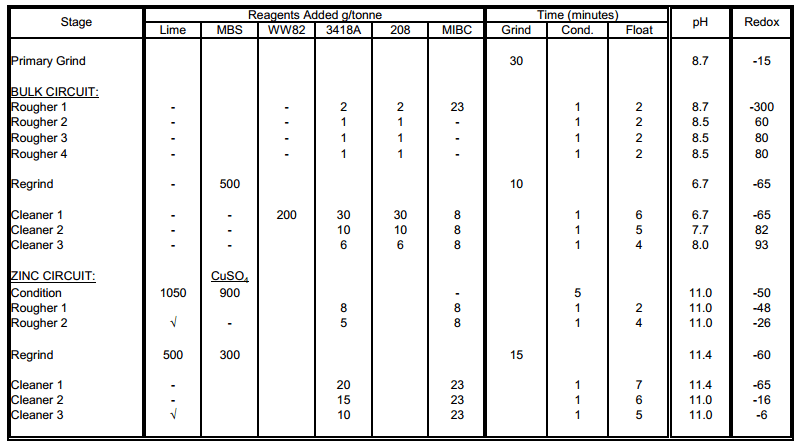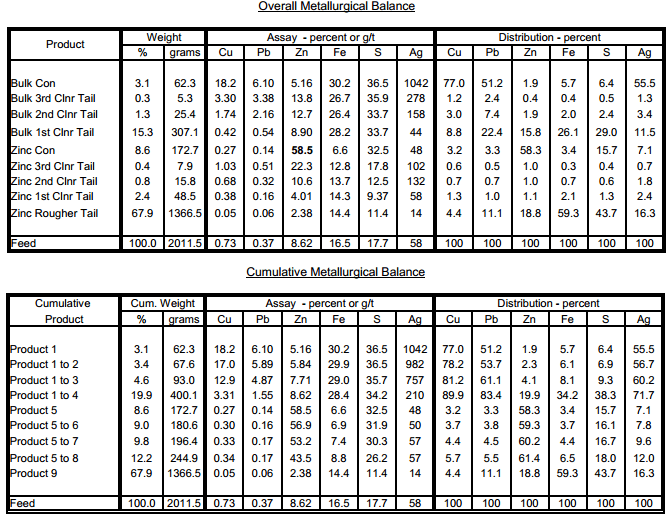Another method to separate Pb from Cu is in depressing the lead away from the copper to float. Here, three batch cleaner tests were performed with additional depressants to reject more lead from the copper flotation concentrate. The baseline test utilized no MBS depression in the rougher circuit to maximize copper recovery, but MBS depression in the copper cleaner circuit (Test 18). Nokes reagent was added in Tests 19 and 20 as an alternative to MBS as a lead depressant.

Test 19 was the most effective test using this reagent scheme. Copper in the feed was 77% recovered to the copper concentrate grading 18.2% copper. The lead grade of the copper concentrate was 6.1%.
Lead was preferentially depressed from the concentrate; however, the separation efficiency was relatively low and resulted in significant lead recovered to the copper concentrate.




